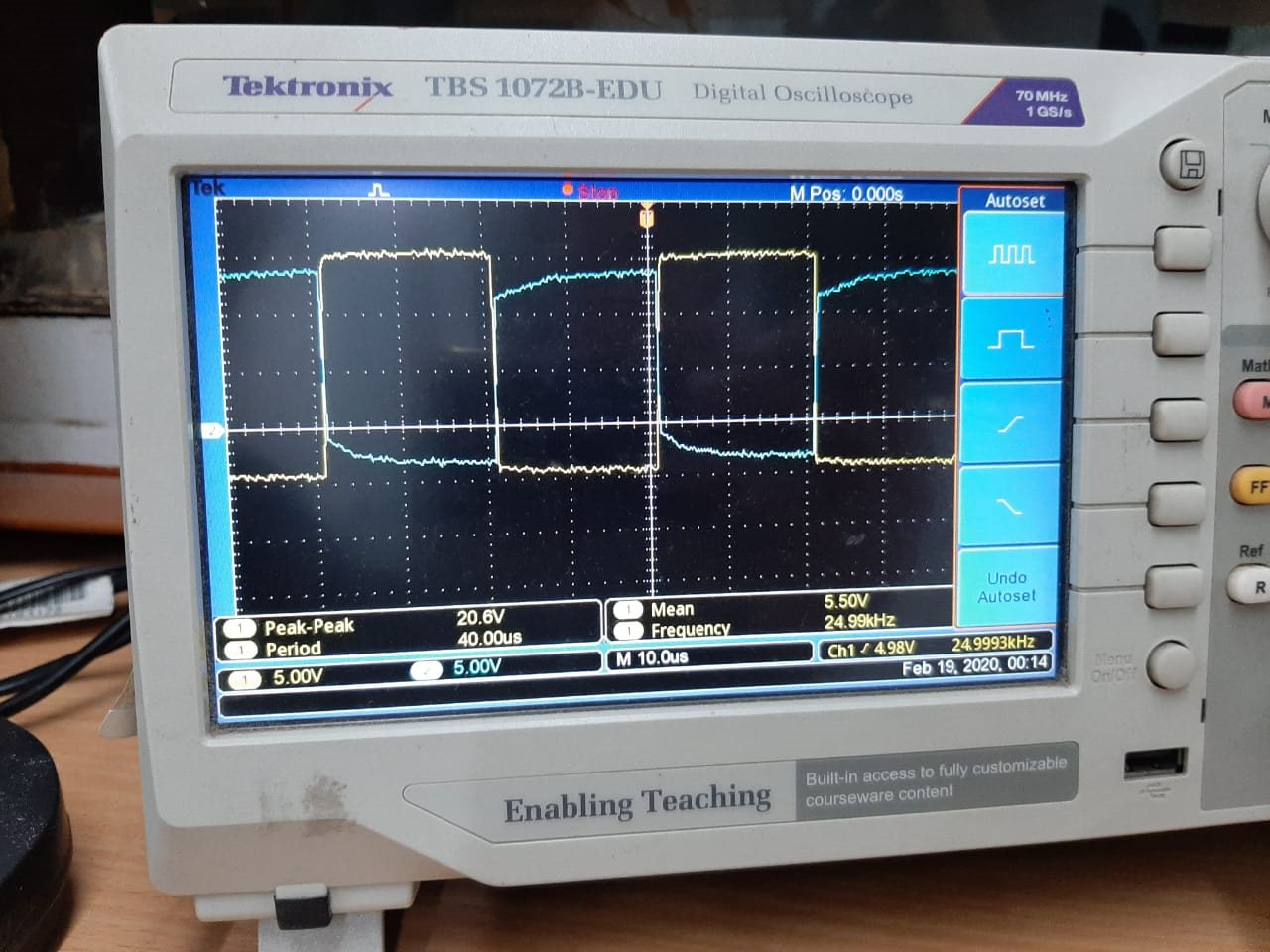Other Parts Discussed in Thread: LAUNCHXL-F28379D, , CSD19536KCS
Hello Team TI,
I have tried TIDA-01605 circuit as given in updated schematic. When I gave 5V input supply and Vg1 and Vg2 (pulses from the Launchxl-F28379D) with 25kHz frequency (and with 100kHz frequency too), I found following results. In these results yellow pulses are for switch 1 and blue pulses are for second switch. Here blue one is not 20V_peak_to_peak (+16V and -4V). However, blue one is getting slope also. WHat could be the possible explanation for this? And, how to rectify this problem?
First figure is with 25kHz switching frequency and second figure is with 25kHz switching frequency and 0.22usec dead time.



